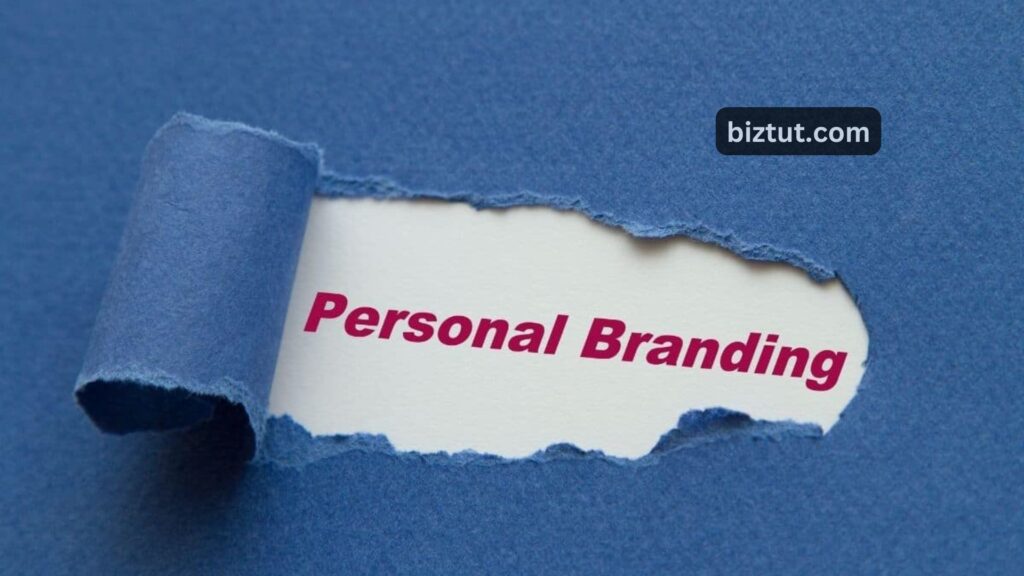Working hard has always kept me busy. Back in college, I juggled two internships at the same time, only to learn that neither company was hiring when I graduated. My first full-time job was at a big tech company, and I put in the extra effort to beat my goals every quarter. But three years later, I was laid off as part of a company-wide cut. Later, once I found my footing again, I was given a major project by my department head at a telecom company—only for the new boss to come in and drop it entirely after a leadership change.
Through all these experiences, I was so focused on meeting daily goals and expectations that I barely thought about my personal brand. Each time I changed roles or was let go for reasons beyond my control, I found myself thinking, “Now I have to prove myself all over again.”
What I wish I had known then: building a personal brand could have saved me from having to start from scratch every time.
When most of us hear “personal brand,” we picture social media influencers dancing, posing, or talking about fitness and fashion. These people are trusted and known for their expertise. They’re in the loop on trends and have a strong following. But what if you could have that kind of influence at work? What if people in your industry looked to you for advice and inspiration? Imagine what that could do for your career.
The idea of building a personal brand as an employee has become popular in recent years—and for good reason. For me, it means staying relevant in your field, which makes you more adaptable and resilient. It’s about being recognized for who you are and what you can do, boosting your visibility, and opening doors to new opportunities. A strong personal brand benefits you and your organization.
So, why don’t more people work on building one? In my experience, it often comes down to time. Building a personal brand takes real effort, and if you, like me, pour yourself into your work, finding that time can be tough. This is especially challenging for young professionals who may feel they don’t have much experience to lean on.
So, how do you get started? The key is to make building your personal brand a natural part of your day-to-day job. Here’s how.
Define your personal brand.
When we work for big companies, it’s easy to get caught up in their culture and start blending our identities with theirs. I’ve always felt proud of the companies I worked for—I’d wear the company colors, use the office lingo, and fully embrace the corporate identity. If that sounds like you, then how can you create a personal brand that stands out within the larger company identity?

To start, think about these three things:
1) Your Uniqueness
What unique perspective do you bring to the company? Think about the layers that make up who you are—your background, culture, race, gender, sexuality, beliefs, and so on. Ask yourself: How does my identity shape the way I see the world and this business? What can I offer that others might not? Remember, your differences are your strengths.
2) Your Values
What do you care about? Which issues, whether global, local, or community-based, matter to you? What causes resonate with you? For inspiration, look up the UN Global Issues or recent PWC reports. Climate change, equality, health, human rights, innovation—these are just some examples that could guide your sense of purpose at work.
3) Your Contributions
Based on your experience or studies, what can you offer to your industry? Maybe you studied psychology and have insights into human behavior that benefit the marketing team, or you’re a UX designer who’s focused on accessibility, or you’re great at analytics and can use data to tell the story behind business strategies. Whatever it is, think about how you can bring value to your work, your team, and your field.
These three elements together make up your personal brand.
For example, I’m a woman with an international background, passionate about technology, who has experienced the challenges of being a working mother and an immigrant (my uniqueness). I believe in equality and want to help people from diverse backgrounds find opportunities in tech (my values). As a leader of a tech team, I offer advice to those looking to break into tech or upskill (my contributions). Altogether, this creates a unique personal brand based on who I am, what I value, and what I bring to the table.
Not an expert yet? That’s okay! Building a personal brand is a journey, and it takes time and learning. You may not have all the skills yet, but you do have something to offer. Just decide what that is, think about what you can contribute now, and commit to growing in that area. And remember, it’s perfectly fine if your brand evolves over time.
Find initiatives and organizational goals that are aligned with your brand.
Now that you know what your personal brand is all about, it’s time to put it into action. Make it part of your professional goals, so it becomes a natural part of your workday.

Start by looking at the projects your team is working on. Do any of them line up with your personal brand? If yes, volunteer to join in. If not, dig a little deeper—see what’s happening at the company level. Large organizations often share annual reports on topics like sustainability, DEI (Diversity, Equity, and Inclusion), and workforce development. Read these reports, and connect with the teams working on projects that interest you.
For instance, is there an initiative that aligns with your brand and could use extra support? When I worked at a large telecom company, I wanted to take on projects outside my regular role. I found a team working on defining our organizational purpose. Though they had core members, they were open to collaborators from other departments. I ended up leading a part of the project focused on building digital communities, which fit perfectly with my brand. I learned a lot, expanded my network, and shared valuable insights with my manager and team.
If you’re at a smaller company, speak up about your skills, and ask how you can support public-facing projects. This is a great way to increase your visibility and showcase your brand within and outside the company. Just like I did, frame your involvement as a developmental or stretch goal. Who knows? It might just lead to your next big opportunity.
Connect with colleagues who have similar interests.
Making your brand a part of your work is a great start, but you don’t have to go it alone. You need colleagues with similar interests who can inspire you, support you, help you shape your message, bring in fresh perspectives, and push you to improve your ideas.

For example, if part of your brand is creating a more inclusive workplace for first-generation employees, who in your company could you connect with to help you build on that goal, share ideas, and create a real sense of community? Many companies have employee resource groups (ERGs) that focus on supporting different identities—these can be a good place to start.
If your brand centers around environmental, political, or human rights issues, check if your company has discussion groups on those topics. You can also look up your “company name” + “social issue” online to see if any coworkers have shared their thoughts on these topics in articles or on social media. Don’t hesitate to reach out and set up a virtual coffee chat with people who inspire you—they’ll likely be happy to connect.
You can also take the lead yourself. Share articles or videos you’re passionate about with your team, or organize a “lunch and learn” on topics that align with your brand. This can help like-minded people find you, expand your network, and might even introduce you to new mentors or partners who share your vision.
Create and share content.
You’re meeting new people and diving into new projects. Now comes an essential step: creating and sharing content. Here’s why it matters: people move, projects end, and if you don’t have content to show your work, you could end up starting from scratch like I did early in my career. Updating your resume and LinkedIn is helpful, but without content that shows your impact, people may not know what you actually accomplished or what you stand for.

Try setting aside an hour or two at the end of the day or week (or whenever works best for you) to focus on content creation. A simple place to start is by reposting articles or news that align with your brand on LinkedIn or Twitter, but don’t just hit “retweet.” Add your perspective on why it matters to you. As you get more comfortable sharing your thoughts, you might feel inspired to write your own posts, articles, or even make videos on topics that resonate with you.
Creating original content takes more time and effort, but if you share thoughtful, ethical, well-researched ideas, people will respond. Your personal brand will grow slowly but naturally. Be open to all kinds of feedback—positive, critical, and everything in between. Just as you’re free to share your views, others will share theirs. Use this feedback to learn, re-think your ideas, and come back with stronger content.
As you reach more people, you’ll likely get opportunities to showcase your brand. This could look like speaking at company-wide meetings or giving presentations internally or externally. These moments will push you to create more content as part of your role, and you can repurpose and build on it for new posts and projects.




